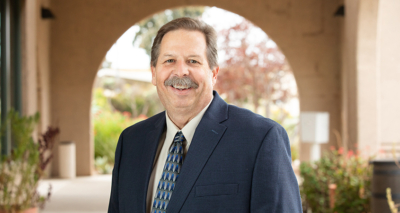New Partnership Promotes WaterSmart Landscapes, Healthy Watersheds in San Diego County
Residents and businesses in unincorporated areas of San Diego County are eligible for increased water-use efficiency rebates under a new partnership between the County’s Watershed Protection Program and the San Diego County Water Authority.
The County’s new Waterscape Rebate Program will save money for residential, commercial, and agricultural customers who make landscape upgrades that improve the region’s climate resilience and reduce the flow of pollutants into waterways. Sustainable landscapes produce multiple benefits for San Diego communities, such as reducing water use, enhancing habitat, increasing stormwater retention, and decreasing run-off.
Increased rebates with new partnership
The newly enhanced incentives include rebates that start at $3 per square foot for turf replacement, $60 per smart controller station, $65 per rain barrel and up to $450 per cistern. The agencies are also offering technical assistance to upgrade larger landscapes on multifamily and commercial properties, and a cost-share with agricultural growers to make water-saving upgrades.
Water customers in unincorporated San Diego County can determine their eligibility at: SanDiegoCounty.gov/WatershedRebates.
For the past 30 years, the Water Authority and its member agencies have promoted water-use efficiency through a variety of tools such as rebates, classes, and other resources available across their service areas. Landscaping upgrades are particularly important because more than half of all residential water use is outdoors. Some cities and water agencies in the region choose to increase the rebates like the County is doing for residents in unincorporated areas. Rebates, classes and incentives available to all residents in the San Diego metropolitan area are also at www.watersmartsd.org.
“Drought conditions across the West are a reminder of the importance of water-efficiency upgrades, and these rebates offer a great opportunity to get involved,” said Kelley Gage, Director of Water Resources for the San Diego County Water Authority. “With a WaterSmart approach, we can reduce water-use and maintain climate-friendly landscapes that help sustain our quality of life in San Diego County.”
Maximize your yard. Minimize your bills
The new partnership is part of the County’s new Waterscape Rebate Program, which helps to protect local waterways by reducing pollutants that enter storm drains. The program includes outreach and education to commercial, industrial, and residential properties in unincorporated areas of the county. In addition to the programs administered by the Water Authority, the County is offering programs with rebates for upgrades including rain gardens, gutters, permeable pavement, and regular septic system pumping.
Project Clean Water
“The County is committed to reducing stormwater pollution to help protect water and foster healthy communities,” said Scott Norris, Land Use Environmental Planning Manager at the County of San Diego. “Partnering with the Water Authority allows us to offer even more resources to help unincorporated residents and business owners upgrade their properties with incentives that can cover a large portion of the costs and actively contribute to protecting our waterways for everyone.”
To learn about how individual actions can promote clean water and healthier communities, and to take the “52 Ways to Love Your Water” pledge, go to: www.projectcleanwater.org/


















